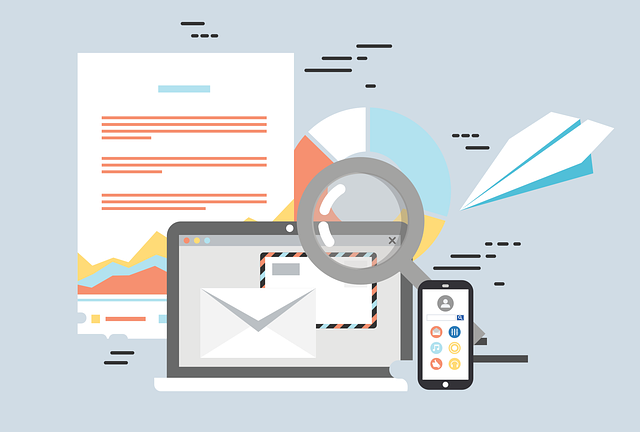In the digital age, emails form the backbone of communication for businesses worldwide. But not all emails are created equal. How about Transactional Email vs Marketing Email? Enter the world of transactional and marketing emails—each playing a vital role in your business’s success. Let’s dive into what sets them apart and how they contribute to nurturing customer relationships and driving growth.
What is Transactional Email?
A transactional email is an automated message sent to an individual in response to a specific action or event, like a password reset request or order confirmation. These emails are crucial for ongoing customer interaction and support.
What is Marketing Email?
Marketing emails are designed to promote products, services, or events to a list of subscribers. These emails aim to engage, inform, and convert recipients into customers, often part of a broader email marketing strategy.
Transactional email vs marketing email: Similarities

Building Customer Relationships
Both transactional and marketing emails play pivotal roles in building and maintaining customer relationships. Whether it’s a welcome email that greets new subscribers or a shipping notification that updates customers about their purchases, each touchpoint is an opportunity to enhance the customer experience.
Enhancing Customer Experience
From the moment a customer signs up, every email—be it a confirmation email for a new account or a promotional email about an upcoming sale—contributes to their experience with your brand. Thoughtful, well-crafted emails can significantly boost customer satisfaction and loyalty.
Improving Email Deliverability
For both types of emails, ensuring high deliverability is crucial. Using dedicated IP addresses, managing sender reputation, and respecting email service provider guidelines help keep your messages out of the spam folder, whether they’re critical transactional emails or captivating marketing messages.

Utilizing Automated Emails
Automation is key in sending both transactional and marketing emails efficiently. Automated emails ensure timely delivery of welcome messages, password resets, and promotional offers, helping maintain a consistent communication flow with your audience.
Adhering to Regulations
Transactional and marketing emails must comply with email regulations like CAN-SPAM, which mandates clear identification of message types and includes the necessity of an unsubscribe link in marketing emails. Compliance ensures respect for customer preferences and legal standards.
Segmenting Email Messages
Smart segmentation ensures that the right messages reach the right people. While transactional emails are triggered by specific customer actions, marketing emails can be segmented based on behavior, preferences, or demographics, enhancing the relevance and effectiveness of email campaigns.
Monitoring Engagement and Performance
Analyzing click-through rates, open rates, and other engagement metrics is essential for both email types. This analysis helps refine strategies, ensuring that transactional notifications are promptly received and marketing emails resonate with the audience.
Leveraging Email for Direct Communication
At their core, both email types are direct lines of communication with your customers. Whether it’s a delivery confirmation email that reassures a customer or a beautifully designed promotional email that inspires a purchase, each email is a touchpoint that strengthens the bond between your brand and its customers.

Expert Comment on Transactional and marketing Emails
“In today’s digital ecosystem, the interplay between marketing and transactional emails is more nuanced than ever,” observes renowned email marketing consultant, Jonathan Greer. “Transactional emails, including shipping notifications, invoice emails, and password reset links, are foundational to a smooth customer experience. They are direct responses to user actions, making them highly anticipated and read. Jonathan emphasizes the importance of leveraging transactional email sending capabilities to not only fulfill a service but also to reinforce brand presence subtly.
On the other hand, Jonathan points out that marketing emails, which range from broad-based promotional messages to targeted offers based on email preferences, drive the narrative of your brand and invite customer engagement. “Crafting compelling examples of marketing emails requires a deep understanding of your audience and their journey with your brand,” he notes, suggesting that the best email strategies integrate insights from both marketing and transactional messages to create a cohesive customer experience.
“Separating transactional emails from marketing messages is critical for compliance and clarity, but that doesn’t mean they should exist in silos,” Jonathan advises. Utilizing SMTP relay and a distinct message stream for each can help maintain this separation while ensuring reliable delivery.

Moreover, Jonathan highlights how transactional emails offer unique opportunities for cross-promotion. “Including subtle marketing cues in transactional emails—a practice often overlooked—can significantly enhance customer engagement without compromising the primary message’s intent.”
He also touches on the technical aspects: “Employing different IP addresses for transactional and marketing emails can safeguard your sender reputation, ensuring critical notifications and confirmations reach your customers without interference.”
In conclusion, Jonathan advocates for a strategic overlap where appropriate. “By understanding and respecting the difference between marketing and transactional emails, brands can navigate the fine line of informative versus promotional content, ensuring that every email sent adds value to the customer’s journey.” This approach, he suggests, not only maximizes the efficacy of each email sent but also strengthens the overall brand experience.
Transactional email vs marketing email: differences

Purpose and Trigger
Transactional emails are sent in response to specific actions taken by users, such as making an online purchase, resulting in emails like order confirmations and invoice emails. These are necessary communications that facilitate a transaction or update user account activity. In contrast, marketing emails are crafted to promote a product, service, or brand, aiming to engage or re-engage customers through promotional emails, newsletters, or email campaigns designed to drive sales or brand awareness.
Content Relevance and Personalization
Transactional emails are highly personalized and relevant to the recipient’s immediate actions or needs, such as a password reset email or a shipping notification. Each transactional message is uniquely relevant to the user’s interaction with the service or ecommerce website.

On the other hand, marketing emails aim to appeal to a broader audience segment, focusing on interests, previous interactions, or potential needs, using strategies like email segmentation and targeted content to increase relevance.
Legal Requirements and Unsubscribe Links
A key difference lies in legal requirements, particularly regarding the presence of an unsubscribe link. Marketing emails must include a way for recipients to opt-out of future communications, adhering to regulations like CAN-SPAM. Transactional emails, however, are exempt from this requirement as they are considered essential information related to a user’s account or purchase, thus not requiring an unsubscribe link.
Delivery Infrastructure
The delivery infrastructure for transactional and marketing emails often differs, with many organizations choosing to use separate IP addresses or even separate email service providers to distinguish between the two. This separation helps in maintaining a high sender reputation for transactional emails, ensuring critical messages like password reset links and account creation confirmations are delivered without delay, while marketing emails might have a different threshold for deliverability concerns.
Frequency and Volume
The frequency and volume of transactional emails are directly tied to user actions, meaning they are sent as needed – for instance, after a password reset request or an ecommerce transaction. Marketing emails, conversely, are sent based on strategic planning and scheduling, which can vary from daily to monthly, aiming to keep the brand top-of-mind without overwhelming the recipient.
Intent and Call-to-Action
The intent behind transactional emails is to inform or confirm, with a clear focus on a single call-to-action related to the user’s action, such as confirming an email address or completing a purchase. Marketing emails, however, often encourage recipients to take a variety of actions, from visiting a website to taking advantage of a sale, with the intent to drive engagement, conversions, and loyalty.
Engagement Metrics and Success Evaluation
For transactional emails, success is typically measured by delivery rates, open rates, and the completion of the intended action (e.g., account verification or password reset completion). Marketing emails evaluate success through broader engagement metrics, including click-through rates, conversion rates, and ROI, reflecting their broader goals of engagement and sales.
Design and Creativity
Transactional emails tend to have a straightforward, utilitarian design focused on clarity and efficiency, ensuring the recipient understands and can act on the information provided. Marketing emails, by contrast, leverage creative and compelling designs, utilizing visuals, storytelling, and branding to capture the recipient’s interest and encourage engagement with the content.
Expert Comment on Transactional Emails
“Understanding the nuanced differences and synergies between transactional and marketing emails is crucial for any digital marketing strategy,” says digital communication strategist Evelyn Markham. “Transactional emails, such as order confirmations and password reset emails, play a vital role in ensuring customer satisfaction and streamlining user experiences. These emails, triggered by specific customer actions, need to be timely, accurate, and securely delivered, often requiring a dedicated IP address for optimal deliverability.
On the flip side, marketing emails, from promotional messages to welcome emails, aim to deepen customer relationships and drive engagement. Strategies like segmenting these emails based on customer preferences and employing a double opt-in process can significantly improve click-through rates and overall campaign effectiveness.
Evelyn emphasizes the importance of maintaining a clear distinction between these two types of emails to avoid confusion and enhance the effectiveness of email communications. Transactional Email vs Marketing Email? “Using separate transactional and marketing email streams not only helps in adhering to email regulations but also ensures that critical transactional messages reach the customer without delay,” she adds.
Moreover, Evelyn highlights innovative uses of transactional emails as a touchpoint for marketing by including promotional content in a non-intrusive manner, thus blending the lines between transactional and marketing efforts for existing customers. “However, it’s vital to balance promotional content in transactional emails to not overshadow the primary message or intent,” she cautions.
In conclusion, Evelyn advocates for a cohesive email strategy that leverages the strengths of both transactional and marketing emails. “By understanding the unique roles each type of email plays in the customer journey, businesses can craft more effective and engaging email communications, ultimately leading to improved customer satisfaction and loyalty,” she states, underscoring the importance of crafting emails that are uniquely relevant to the recipient, whether for confirming a recent purchase or inviting them to explore new products.”
Frequently Asked Questions (FAQs) on Transactional Email vs Marketing Email
1. What are some examples of transactional emails?
Transactional emails include a variety of automated messages sent in response to user actions. Common examples are password reset emails, order confirmation messages, shipping notifications, and invoice emails. These emails provide critical information like password reset links, purchase receipts, and email receipts, ensuring a smooth user experience.
2. How do transactional emails differ from marketing emails?
Transactional emails are sent in response to a specific action taken by the user, such as making a purchase or requesting a password reset, and contain information directly related to that action. Marketing emails, on the other hand, are commercial messages aimed at promoting a product, service, or brand to drive sales or engagement. The key difference lies in the content and purpose of the emails.
3. Can transactional emails include marketing content?
Yes, transactional emails can include marketing content, but it’s important to maintain a balance. The primary focus should remain on the transactional information, like confirmation details or invoice data. However, adding a section for related products or a promotional message can be a subtle way to cross-promote and maximize the email’s value without overshadowing the main content.
4. What is the importance of sending separate transactional emails?
Separating transactional emails from marketing messages is crucial for a few reasons. It ensures that important notifications, confirmations, and receipts are delivered promptly without being caught in spam filters. Additionally, it helps comply with legal requirements, as transactional messages are not subject to the same regulations as commercial emails.
5. Why is a verification email considered a transactional email?
A verification email is considered a transactional email because it’s sent in response to a user’s action, specifically, when they register for a new account or update their email preferences. This email typically includes a verification link to confirm the user’s email address, ensuring the legitimacy of the registration process and securing the account.
6. How can I improve the delivery of my transactional emails?
Improving the delivery of transactional emails can involve a few strategies, such as using a dedicated IP address for sending these emails, ensuring the email content is clear and concise, and regularly monitoring and maintaining a good sender reputation. Additionally, segmenting your email streams to keep transactional and marketing emails separate can help prevent critical notifications from being marked as spam.
7. Are there any creative examples of combining transactional and marketing emails effectively?
Creative examples of combining transactional and marketing emails include adding personalized product recommendations to order confirmation emails or including a special discount offer in a shipping notification. Another approach is to feature upcoming events or content related to the user’s purchase in an invoice email. These strategies can enhance the customer experience by providing additional value while maintaining the primary transactional message’s integrity.




